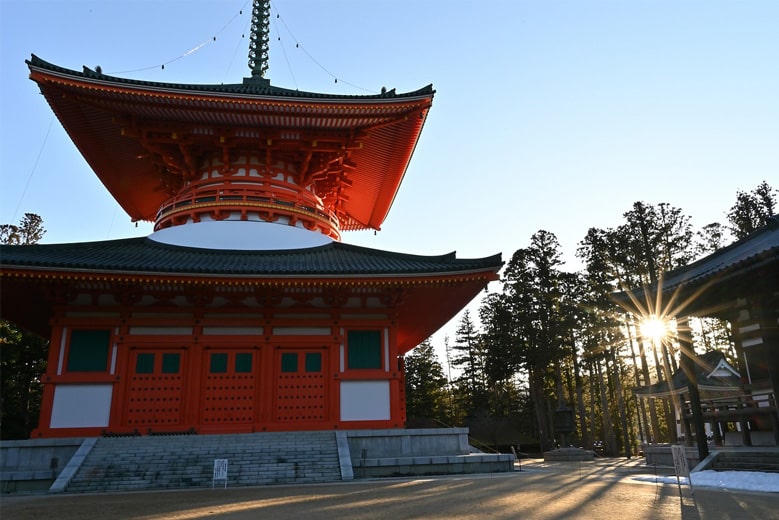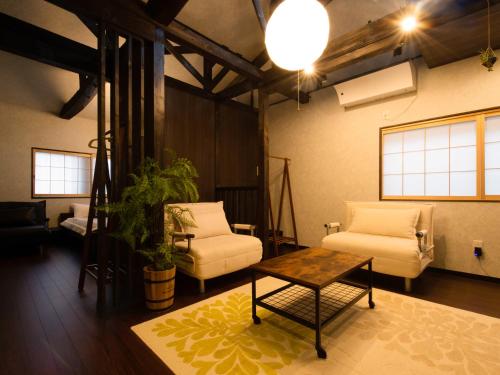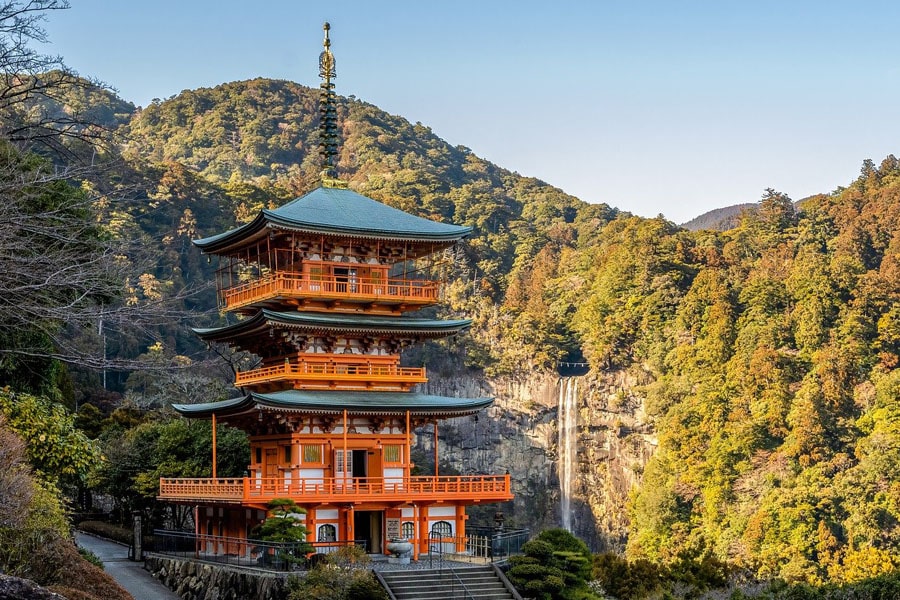
Koyasan (Mount Koya) is a sacred mountain and the center of Shingon Buddhism, located in Wakayama Prefecture, Japan. Established in 816 by the revered monk Kūkai (Kōbō Daishi), who introduced Shingon Esoteric Buddhism to Japan, Koyasan remains one of the country’s most important spiritual destinations. It is part of the UNESCO-listed “Sacred Sites and Pilgrimage Routes in the Kii Mountain Range.”
Koyasan is renowned for its ancient temples, serene cedar forests, and profound spiritual atmosphere. One of its most unique offerings is the temple lodging (shukubo) experience, where visitors can stay overnight in a Buddhist temple, enjoy traditional vegetarian monk cuisine (shōjin ryōri), and participate in morning prayers.
As one of Japan’s holiest sites, Koyasan attracts Buddhist pilgrims seeking enlightenment, meditation, and devotion. It holds special significance for followers of Shingon Buddhism, as Kōbō Daishi is believed to be in eternal meditation at Okunoin, Koyasan’s sacred cemetery.
However, Koyasan’s appeal extends beyond religious devotion. Visitors of all backgrounds are drawn to its rich cultural heritage, tranquil landscapes, and deep historical significance. With an open mind and a curiosity for Japan’s ancient traditions, Koyasan offers a truly authentic and immersive experience.

Danjo Garan temple complex
At the heart of Koyasan lies Danjo Garan, a complex of temples and halls where monks and pilgrims gather for worship and study. Notable structures include:
- Konpon Daitō Pagoda – Symbolizing the Buddhist universe, this striking red pagoda is a key landmark of Koyasan.
- Kondō (Golden Hall) – A sacred hall housing important Buddhist relics and statues.
Okunoin is Japan’s largest cemetery and one of its most revered spiritual sites. It is the final resting place of Kōbō Daishi, whose Gobyo (mausoleum) lies at the end of a mesmerizing pathway lined with towering cedar trees and thousands of stone lanterns.
The atmosphere here is profoundly peaceful, yet at times, eerily quiet—especially in the early morning or late evening. On still days, when even the wind is absent, the silence within the Okunoin forest can feel haunting, as countless gravestones surround visitors in an otherworldly setting.
Nestled deep in the mountains of Wakayama Prefecture, Koyasan offers a solitude and tranquility that is difficult to find elsewhere in Japan. Far from the bustling cities of Osaka and Tokyo, the stillness of Koyasan is a defining part of its charm—allowing visitors to step back in time and experience a rare, undisturbed connection to Japan’s spiritual past.
- 🏯 Spiritual Center of Shingon Buddhism – Founded in 816 by Kūkai (Kōbō Daishi), Koyasan is one of Japan’s most important religious sites.
- 🏆 UNESCO World Heritage Site – Part of the “Sacred Sites and Pilgrimage Routes in the Kii Mountain Range.”
- 🛖 Stay in a Buddhist Temple (Shukubo) – Experience traditional monk lodging, including vegetarian cuisine (shōjin ryōri) and morning prayers.
- 🌲 Okunoin Cemetery: Japan’s Largest – A mystical, lantern-lit forest path leading to Kōbō Daishi’s mausoleum, where he is believed to be in eternal meditation.
- 🏮 Danjo Garan Temple Complex – The heart of Koyasan, featuring the Konpon Daitō Pagoda and Kondō (Golden Hall).
- 🏔️ A Remote & Serene Mountain Sanctuary – Hidden in Wakayama Prefecture, far from Japan’s bustling cities.
- 🍁 Breathtaking Nature & Seasonal Beauty – Stunning cherry blossoms (spring), lush greenery (summer), vibrant foliage (autumn), and snow-covered temples (winter).
- 🚉 Scenic Journey to Koyasan – Accessible via the Nankai Railway and a cable car ride through the mountains.
- 🙏 A Major Pilgrimage Destination – A place for meditation, enlightenment, and Buddhist study, yet open to all visitors.
- 🌌 Eerie Yet Magical Atmosphere – The silent forests and ancient tombstones of Okunoin create an otherworldly experience, especially at night.
Popular destinations among other readers
Start planning your trip to Japan, book your accommodation now!
Accessing Koyasan
Koyasan is located near the northern borders of Wakayama prefecture. It is a little difficult to access due to its remote location.
Train services do not run through this peaceful town, so if you are starting in Wakayama city, you will need to take a couple of train lines to Gokurabashi station, and board a cable car from there which will take you to Koyasan station, from there you will need to board a bus to get to the main town center as the station is a couple of kilometers away from the town and walking from Koyasan station to the center of town is illegal.
Buses will only cost 290yen to get to Senjuinbashi bus stop, from there you can explore Koyasan.
Discover Japan like never before with the Japan Rail Pass (JR Pass), your ticket to seamless travel across the Japan. Unlock the full potential of Japan’s extensive rail network, renowned for its punctuality, comfort, and convenience.
Discover Japan like never before with the Japan Rail Pass (JR Pass), your ticket to seamless travel across the Japan. Unlock the full potential of Japan’s extensive rail network, renowned for its punctuality, comfort, and convenience. Read More…
Forget the hassle of purchasing individual tickets for every journey. The JR Pass offers exceptional value for money, available in flexible durations ranging from 7 to 21 days, allowing you to tailor your travel experience to suit your itinerary. Read More…
Where to Stay
Visitors to the town can experience temple lodging, known as shukubo, where they can participate in morning prayers and enjoy vegetarian meals prepared by monks. Pilgrims often spend several days exploring the temples and hiking trails that crisscross the mountain.
Guest House Suzumeno Kakurembo
Comfortable guesthouse in town with friendly staff and affordable modern rooms.
Koyasan Saizenin
Temple-stay experience in historic temple, providing an authentic Koya-san experience.






